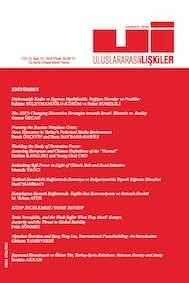
Uluslararası İlişkiler Dergisi
Yazarlar: Mert BİLGİN
Konular:Sosyal
Anahtar Kelimeler:Transition Economy,Liberalization,The State,Caspian,Turkic Republics .
Özet: Post-Soviet countries ape either passing through a transition period, or have already completed it, as an outcome of the neoliberal pressures of international actors. The attempts have focused on reconstruction of the state because of its being conceived as an impediment in front of political and economic liberalization, The states of Azerbaijan, Kazakhstan and Turkmenistan resemble other transition economies in the sense that they share a similar Soviet legacy. Nevertheless, they deviate from the rest by the virtue of natural resources which endow the state the ability to re-produce itself. The state of Azerbaijan has liberated itself from the soriety by using the natural resource rents, which in turn outmode taxation as an instrument of revenue. Despite Kazakhstan's discernible progress in launching economic reforms, the state has politically kept its solid srructure. The Kazakh state has preferred to allocate the natural gas revenues for economic transformation with no political liberalization. Under an autocratic regime, the Turkmen state has strengthened its positioning vis-a-vis the society with no economic and political transformation.